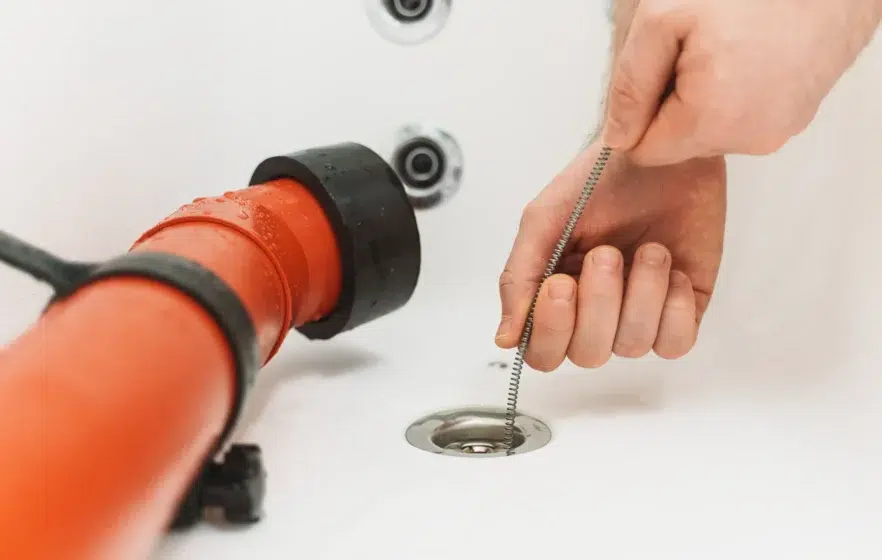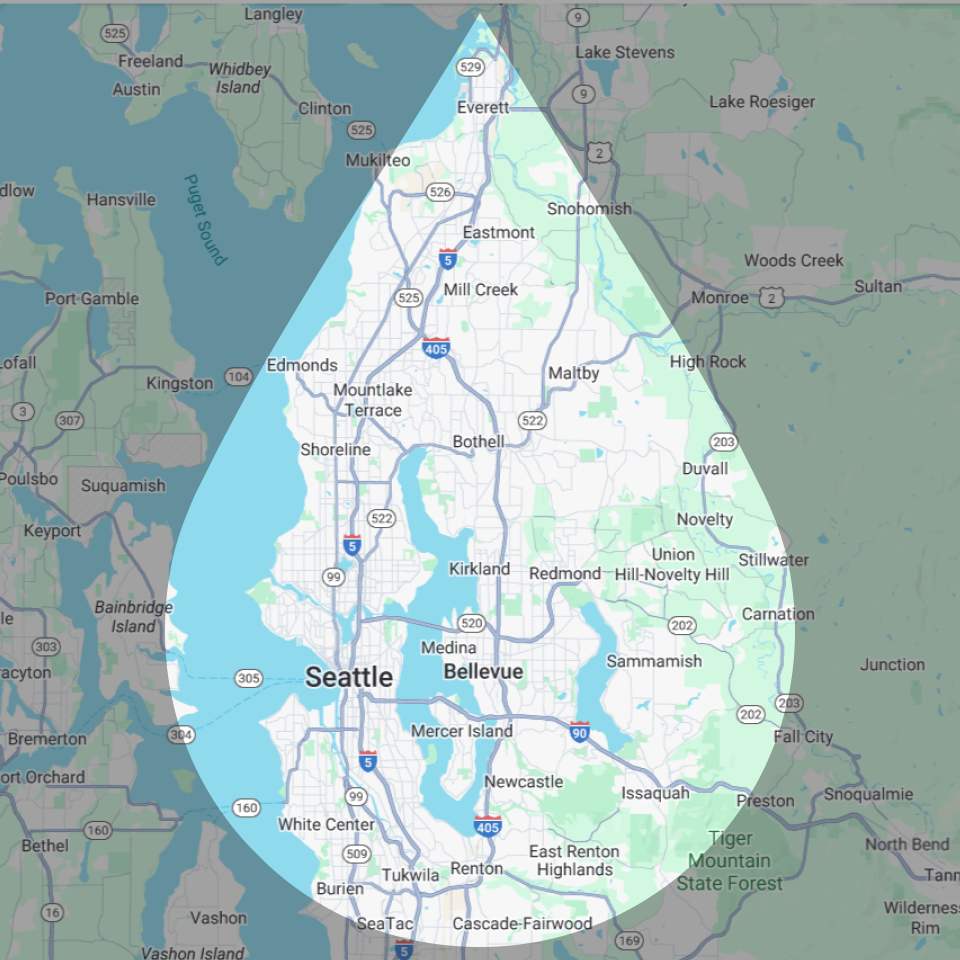A slow, smelly drain doesn’t happen overnight. Grease film, soap residue, and hair build up little by little until water can’t move as it should. The best part? Most clogs are preventable with a few simple habits and periodic maintenance. In this guide, you’ll learn why drain clogs happen, everyday steps that keep lines clear, safe DIY maintenance, early warning signs to watch for, and when it’s smart to call a licensed professional. If a clog is already stubborn, Ben’s Plumbing offers gentle, effective drain cleaning services in Seattle to get things flowing again—without harsh chemicals.
Why Drain Clogs Happen in the First Place
Drains are designed for water and dissolved waste—not for everything we rinse away during busy days. Over time, small missteps add up.
Common Household Items That Should Never Go Down the Drain
It’s tempting to treat the drain like a catch-all, but several everyday materials quickly create sticky “grout” inside pipes:
- Grease, oils, and fats. They cool and harden on pipe walls, trapping other particles behind them.
- Coffee grounds & fibrous foods (celery, onion skins, artichoke leaves). These tangle and mat together.
- Flour, rice, and pasta. Starches swell and become gluey in standing water.
- “Flushable” wipes & cotton swabs. They don’t break down like toilet paper and snag on rough spots.
- Hair. Especially in showers and bathroom sinks, hair nets with soap scum to form strong clogs.
A good rule of thumb for what not to pour down the drain: if it can congeal, swell, or snag—keep it out.
How Grease, Hair, and Soap Scum Build Up Over Time
Hot water makes grease look harmless for a moment, but it re-solidifies farther down the line. Soap binds with minerals in water, creating a sticky film. Hair threads through that film and creates a net. With each shower or dish cycle, the net gets tighter—until flow slows or stops.
The Hidden Risk of Tree Roots and Old Pipes
Outdoors, root systems seek moisture. If your main line has tiny cracks or older joints, tree roots can invade and fill the pipe. Inside older homes with galvanized or clay lines, interior diameters narrow with corrosion or scale. Those structural issues often need professional solutions (hydro-jetting, sectional repair, or replacement), but good habits still reduce everyday buildup.
Everyday Habits That Help Prevent Clogs
Small, consistent practices are the essence of drain preventative maintenance:
- Catch debris at the source. Use drain screens to catch hair and debris in showers and bathroom sinks, and a basket strainer in the kitchen. Empty them into the trash—don’t rinse the captured gunk down the drain.
- Wipe, then wash. Before washing pans, wipe grease with a paper towel. Pour cooled oils into a disposable container and trash it. This is the best way to keep drains clean in kitchens.
- Run plenty of water. When using the disposal or washing heavily soiled dishes, run cold water before, during, and after to move ground particles through the trap and into larger lines.
- Mind the disposal. Feed small amounts at a time. Avoid fibrous peels and shells that wrap around the impeller.
- Shower hair control. A $5 hair catcher can prevent the most common bathroom clogs. Clean it every couple of days.
- Weekly rinse routine. A brief weekly drain cleaning with hot water (not boiling) helps melt away fresh grease and soap film before they harden.
These tips to keep drains clear are simple, fast, and effective—exactly what “how to keep drains clean” looks like in real life.
Simple DIY Maintenance for Healthy Drains
Think of this as your safe, chemical-free routine drain maintenance tips—ideal for homeowners, renters, and property managers.
Monthly Flush With Baking Soda and Vinegar
For sinks and showers that tend to slow down:
- Run hot tap water for 30 seconds to warm the line.
- Pour ½ cup baking soda, then ½–1 cup white vinegar.
- Let it fizz 10–15 minutes.
- Flush with hot water for 1–2 minutes.
This baking soda and vinegar to prevent clogs approach won’t fix a fully blocked line, but it helps keep fresh film from sticking and is one of the safest natural ways to prevent clogged drains.
Use Boiling Water to Dissolve Minor Build-Up
For kitchen drains only (not toilets or plastic fixtures), carefully pour a kettle of boiling water in two or three small batches, waiting 10–20 seconds between pours. Boiling water can soften certain plastics or crack china if used carelessly; keep it to metal kitchen sinks and avoid splashing. For baths and showers, use very hot (not boiling) water instead.

Keep Your Garbage Disposal Clean and Sharp
- Ice + coarse salt: Grind a tray of ice cubes with a tablespoon of coarse salt to scour the chamber.
- Citrus peels (thin strips): Freshen smell (use sparingly to avoid fibrous tangles).
- Finish with a rinse: Run cold water 30–60 seconds after grinding.
If your disposal smells even after a clean, the rubber splash guard likely harbors residue—remove it (if possible) and scrub both sides.
Avoid chemical drain cleaners. They often fail on real blockages, can damage finishes and piping, and may be dangerous to handle. Mechanical clearing or a professional cleaning is safer and more effective.
Signs a Small Issue Could Become a Big Clog
Catching early symptoms is the best drain clog prevention you can practice.
Gurgling Sounds or Slow Drainage
Gurgles reveal trapped air fighting past a forming obstruction. Slow sinks or tubs—especially after cooking or long showers—signal accumulating film even if water eventually clears.
Foul Odors Coming From the Sink
A sour or sulfur scent points to stagnant film in the tailpiece/trap or a partially blocked line. If odors return days after cleaning, the clog is likely deeper.
Water Backing Up in Multiple Fixtures
If a downstairs tub backs up when the washer drains—or a basement floor drain gurgles when the kitchen sink runs—you may be facing a branch or main-line restriction. That’s beyond DIY and can escalate quickly without proper equipment.
When It’s Time to Call a Professional Plumber
Our experts use effective methods to restore full flow
DIY maintenance is great for prevention and light film, but it has limits. Call a pro when:
- You’ve tried the routines above and flow still slows within days.
- Multiple fixtures in the same area back up or gurgle.
- You suspect tree roots, sagging pipes (bellies), or older, failing lines.
- There’s recurring black sludge or foul water returning into tubs or showers.
- You want preventive drain cleaning on a fixed schedule for rentals, restaurants, or busy households.
A professional can identify whether you’re dealing with a soft clog that needs augering, a grease mat that responds to jetting, or a structural defect that needs repair—saving you time, cleanup, and repeated callbacks.
Professional Drain Cleaning Services in Seattle
How Ben’s Plumbing Safely Clears and Inspects Drains
We start with targeted questions and fixture-level checks, then choose the gentlest tool that will actually solve the problem:
- Cable augering (snaking) breaks up compacted hair, soap, and paper.
- Hydro-jetting washes pipe walls with high-pressure water, removing grease film and restoring internal diameter.
- Camera inspection confirms the line is clean and checks for cracks, offsets, or root intrusion—critical when problems keep returning.
Advanced Tools That Go Beyond DIY Fixes
Our equipment reaches farther and cleans more thoroughly than consumer tools. For example, proper jetting doesn’t just poke a hole through grease; it peels the film off the walls so new buildup can’t anchor as easily. That’s how you get durable results from professional drain maintenance service rather than a quick, temporary fix.
Why Preventive Professional Service Saves Money Long-Term
Periodic cleaning and inspection cost far less than emergency backups, water damage, or repeated product purchases that don’t address the root cause. For older homes or high-use properties, when to schedule preventive drain cleaning is typically once a year (kitchen lines may benefit from semiannual service). Combined with your everyday habits, this approach is the best way to prevent clogged drains without harsh chemicals.
If a line keeps slowing after multiple DIY attempts, that’s your cue. Professional drain cleaning clears the clog and removes the residue that keeps feeding it.
Please Click to Call or Fill out our Contact Form Here



